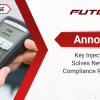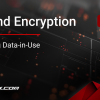How To Choose The Right Payment HSM to Secure Your Payment Transactions Data – Part 3

In the first two parts (part 1 and part 2) of this three-part series on the 9 must-have features in an ideal Payment Hardware Security Module (HSM), we covered 6 crucial features and the pivotal role they play in securing payment transactions’ data.
Below is a quick gist of these 6 critical features that organizations should look for when choosing the right Payment HSM:
1) Dual Functionality: General-purpose data protection as well as payment processing using the same HSM device.
2) Blazing-fast Processing Speeds: Seamless support for up to 50,000 transactions per second (TPS) for unhindered business continuity even during peak times.
3) Multiple Authentication Mechanisms: Such as smartcards, passwords, and FIDO tokens.
4) HSM Virtualization: For enhanced operational efficiency and cost savings.
5) Integrated Working Key Storage: To ensure the secure storage and rotation of working keys for optimal security and PCI-DSS compliance.
6) HSM Partitioning: For quick segregation of duties and data among different business applications for seamless security and scalability.
In this concluding part, let’s look at the additional three features that every Payment HSM should offer.
7) Key Backup Approach
When it comes to key backups, most Payment HSMs available in the market today offer only smartcard-based backups which can be an impediment to a robust key backup strategy.
Since smartcards have a limited storage capacity, they can pose a major challenge in high-volume payment transactions that involve a very large number of cryptographic keys. Additionally, smartcards warrant physical handling for key backup and restoration, which inherently increases the risk of human error and physical losses.
For optimal data protection, in addition to the conventional smartcard-based key backup, an ideal Payment HSM should also offer alternative backup mechanisms like a USB-based backup or encrypted file backups leveraging PKIs.
8) Remote Management and Automation
Most Payment HSMs available in the market today offer remote management only through web interface mechanisms. However, such mechanisms are prone to multiple vulnerabilities arising from stolen or compromised credentials that have become very common in today’s era.
The same goes with key management. Legacy Payment HSMs often do not offer automated key management which makes users rely on manual processes for key migration, key backup, and key retrieval. This not only makes the entire process cumbersome and time-consuming, but also relatively unsecure.
To ensure cohesive data protection, an ideal Payment HSM should offer multiple alternatives when it comes to remote and automated key management.
9) Segregation of Duties
One of the key features often left wanting in today’s Payment HSMs is the quick creation and management of multiple user roles.
Most Payment HSMs available in the market today allow organizations to create only a single authorizing (Administrator) role with no provision to assign separate duties to individual users. Without the ability to create and manage multiple user roles, organizations are constrained to effectively distribute responsibilities or limit access to sensitive cryptographic operations. This in turn, significantly increases the risk of unauthorized access as a single Administrator gets unrestricted control over the Payment HSM.
An ideal Payment HSM should inherently allow organizations to seamlessly create and manage multiple user roles that would not only help in segregation of duties leading to enhanced access controls but also tangible auditability in tracking actions to specific users.
Futurex’s Payment HSMs: A Cut Above The Rest
For the last many years, Futurex’s Excrypt Plus and Excrypt SSP Enterprise v.2 Payment HSMs are considered as the gold standard for cryptographic processing of payment transactions’ data.
With Futurex’s FIPS 140-2 Level 3 and PCI-validated Payment HSMs, organizations can easily create and manage multiple user roles like Administrator, Operator, Settings Manager, Key Manager, Key Exporter, etc. This not only helps in easy segregation of duties but also enhances security by decentralizing duties across multiple users.
When it comes to automated key management, in addition to an intuitive web-based interface, Futurex provides ‘Excrypt Touch’ – a dedicated PCI-certified tablet device that helps in the remote loading and management of encryption keys on Futurex HSMs hosted anywhere in the world. This not only enhances operational ease but also helps organizations maintain robust cryptographic security by eliminating the need for physical access to the HSMs.
Lastly, in addition to smartcard-based backups, Futurex’s Payment HSMs also offer USB-based key backups and encrypted file backups (through PKIs) that make backups an easy and fast task.
Summing Up
In today’s ever-expanding threat landscape, choosing the right Payment HSM is not only critical for optimal data security but also from the standpoint of adhering to industry standards like PCI-DSS.
The 9 features discussed in this series are not just ‘good-to-have’ but a ‘must-have’ to ensure robust, efficient, and secure cryptographic operations.
Futurex’s Excrypt Plus and Excrypt SSP Enterprise v.2 Payment HSMs stand out from the rest as they offer all these 9 essential features, and many more.
To learn how Futurex can help you future-proof your payment transactions’ data, please get in touch with us at sales@futurex.com.
FAQ
Why is it important for a Payment Hardware Security Module (HSM) to offer alternative backup mechanisms, such as USB-based or encrypted file backups, in addition to smartcard-based backups?
Ensuring optimal data protection in high-volume payment transactions requires overcoming limitations associated with smartcard-based backups. The limited storage capacity of smartcards poses challenges, especially with numerous cryptographic keys. Additionally, relying solely on smartcards for backup introduces risks of human error and physical losses. Therefore, an ideal Payment HSM should provide alternative backup mechanisms like USB-based or encrypted file backups using Public Key Infrastructures (PKIs) to address these limitations and enhance data security.
In the context of remote management and automation for Payment HSMs, what are the challenges associated with relying solely on web interface mechanisms, and how can having multiple alternatives address these challenges?
Most Payment HSMs currently available rely on web interface mechanisms for remote management, introducing vulnerabilities associated with stolen or compromised credentials in today’s threat landscape. Moreover, traditional Payment HSMs often lack automated key management, leading to cumbersome and time-consuming manual processes for key migration, backup, and retrieval. To mitigate these challenges and ensure cohesive data protection, an ideal Payment HSM should offer multiple alternatives for remote and automated key management. This approach enhances security by providing robust options beyond conventional web interfaces, reducing the risk of credential-related vulnerabilities and streamlining key management processes.
How does the ability to create and manage multiple user roles in a Payment HSM, as opposed to having only a single Administrator role, contribute to enhanced access controls, segregation of duties, and improved security?
Most current Payment HSMs limit organizations to a single Administrator role, which can lead to challenges in distributing responsibilities and restricting access to sensitive cryptographic operations. This limitation significantly increases the risk of unauthorized access, as a single Administrator has unrestricted control over the Payment HSM. To address these concerns, an ideal Payment HSM should allow seamless creation and management of multiple user roles. This not only facilitates segregation of duties, enhancing access controls but also provides tangible auditability by attributing specific actions to individual users. By decentralizing duties across various roles such as Administrator, Operator, Settings Manager, Key Manager, and Key Exporter, organizations can achieve improved security and efficient management of cryptographic operations.






